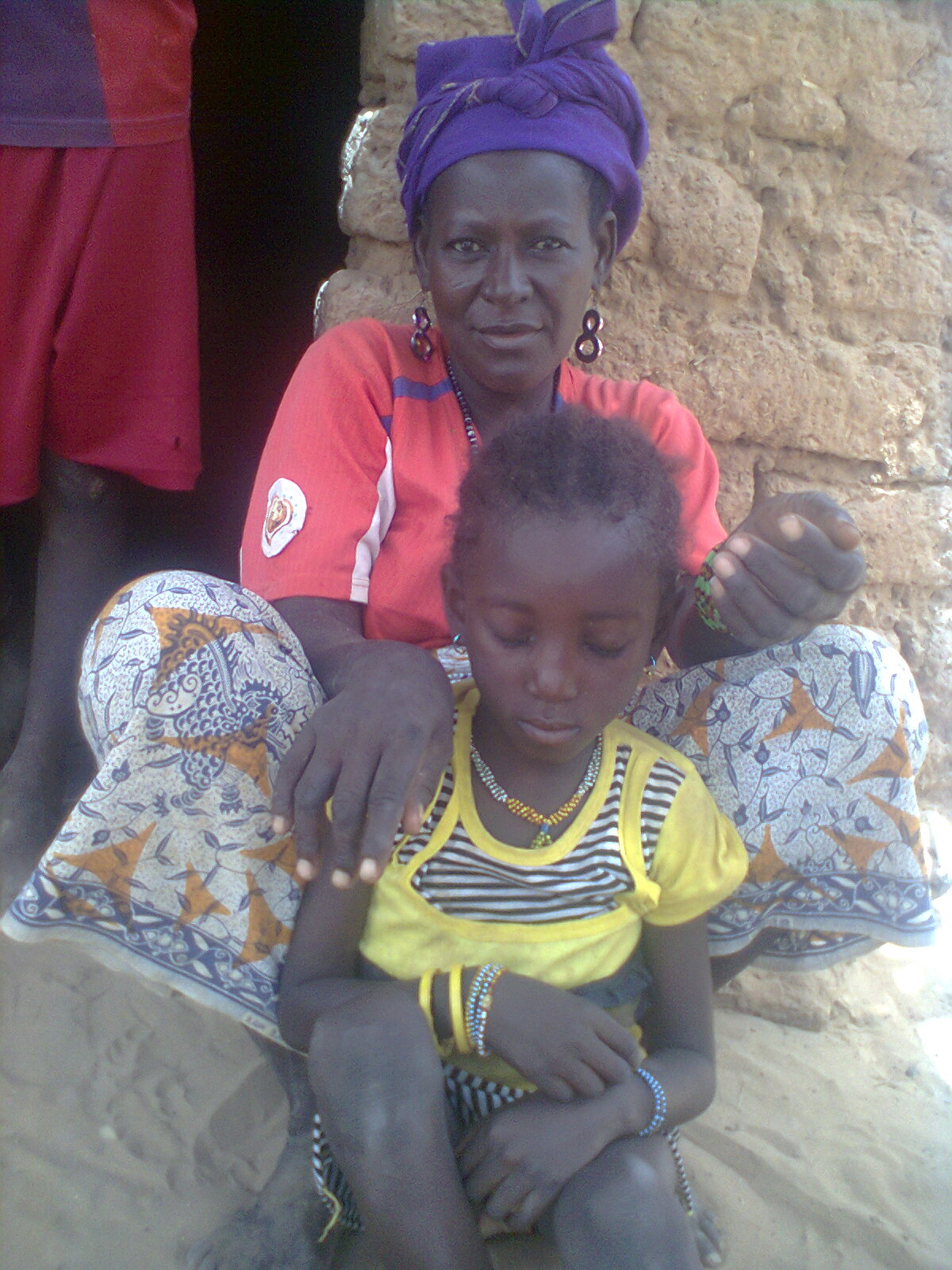
This blog is part of a series organized by The Huffington Post and the NGO alliance InterAction to call attention to the crisis in the Sahel, a region in sub-Saharan Africa where more than 18 million people face starvation and 1.1 million children under the age of 5 are at risk of dying from acute malnutrition. Click here to read more of HuffPost Impact's coverage of the Sahel and here to find out what InterAction members and others are doing in the Sahel.
First stop: Touqfine village, Ouallam
As our car bounces along the dirt track, the monotony of the landscape outside my window lulling me into a daze, I ask a colleague: how much further? It is beyond hot, close to 118 degrees Fahrenheit and the desert sand stretches as far as the eye can see.
"Not far," is the predictable response. We are two hours from Niamey, the capital of Niger, on our way to Touqfine -- a tiny village almost hidden in the desert close to the Mali border. Given the short supply of street signs here, a local joins us to ensure we don't get lost.
The reason for my travel to this remote location of just a few hundred people is simple: As the UN World Food Programme (WFP) Niger Country Director, I am on my way to Touqfine to find out exactly what the villagers are eating this hunger season to survive.
Touqfine is situated in one of the most vulnerable regions of Niger. There was no harvest last year because of recurrent drought; jobs are in short supply and there is no money to buy the increasingly expensive food on the market. This is a hunger crisis. People here -- and across the entire Sahel region of West Africa -- will struggle until the next harvest still months away.
In a small hut, on the edge of the village, I meet Nadia, who lives with her mother and three older siblings. Her father is looking for work in a neighboring country; Nadia's mother Halima can't remember the last time he sent money back.
Nadia is a very thin and rather somber looking little girl; she doesn't go to school and has spent the morning collecting leaves with her mother about six kilometers from their village. Nadia holds the bowl for collecting the leaves while her mother climbs the tree.

Photo: WFP
The leaves are being used to prepare the next meal (and the ones after that). The recipe is pretty straightforward: boil leaves several hours until tender enough to digest; no salt, pepper or oil.
Nadia shares some of hers with me; it is heavy on the taste buds and completely lacking of any nutritional value. This is Nadia's lunch and dinner. She is five years old and malnourished. To grow up healthy and achieve her full adult potential, she needs to get the right nutrition now.
Next stop: Tondikiwindi
I had heard of another village, Tondikiwindi, about a 30 minute drive from Touqfine, so back I go over the sand track.
When the rains do come, the roads are impassable, so WFP and one of our local partners are employing the poorest and most vulnerable women and men to repair the road. These are the families at risk of leaving the village with their children to look for jobs in neighboring cities and countries due to crop failure and a lack of income, leaving schools and education behind. The women and men now work in exchange for food or cash.
On this day, the women are busily repairing the road. Did I have time to visit their community garden, they ask?
With sweat trickling in rivulets down my back, we trek up a dusty, sandy hill and into the garden. Six wells are being used to water at least an acre of squash, tomatoes and potatoes with seeds provided by the Ministry of Agriculture and FAO.
Tondikiwindi is really a stones throw from Touqfine -- only 30 minutes away by 4X4 and slightly longer by donkey cart. However, the quantity and quality of the food in Tondikiwindi beats Touqfine hands down.
Our food and cash-for-work program has stabilized this population, keeping women and children in their homes, and providing food for a basic daily meal. The irrigated crops do more than jazz up the daily menu. These women can sell the surplus harvest to put money in their pockets, improve their lives, and protect their families against future shocks.
Drought happens frequently in this region of the world, but this village is proof that hunger doesn't have to. When families get the right nutrition, communities are empowered to develop solutions to better face the next drought. They build roads, construct dams and plant gardens.
This year, WFP plans to reach 3.8 million people in Niger with food and cash assistance. We're working with villages like Tondikiwindi year-round so that they're strong enough to get through the next hunger season without assistance.
The contrast of these two neighboring villages makes me wonder about one simple part of the formula for building resilience: something to eat today and something to sell for tomorrow. Think of resiliency as concentric circles with households' agricultural production being the inner circle, one donor colleague explained to me. Building resiliency has to start with access to food -- we can't do much if we don't eat but it can't stop there.
Last stop: Niamey
Once back in Niamey, we get to work to make sure food and seeds are distributed in Touqfine to help people like Nadia and her family. I am relieved to learn that Nadia went to the government-run health center, supported by WFP and UNICEF, and is now being treated for malaria and malnutrition. The menu for lunch is improving as is the one for her future.
For more information on WFP's work in the Sahel, please visit our crisis homepage.